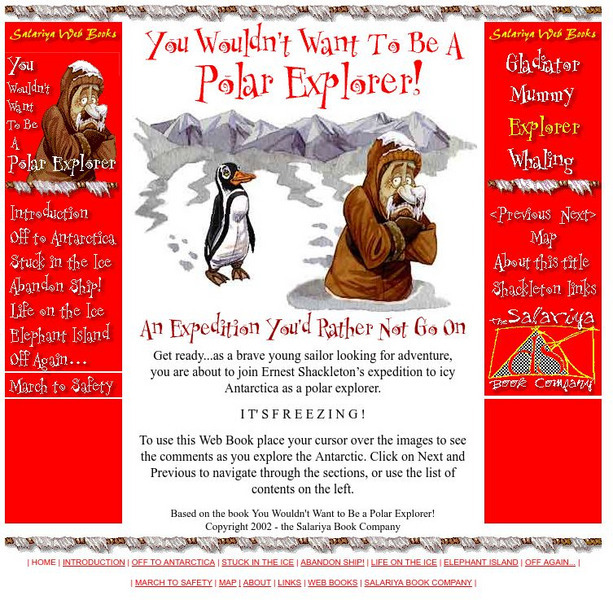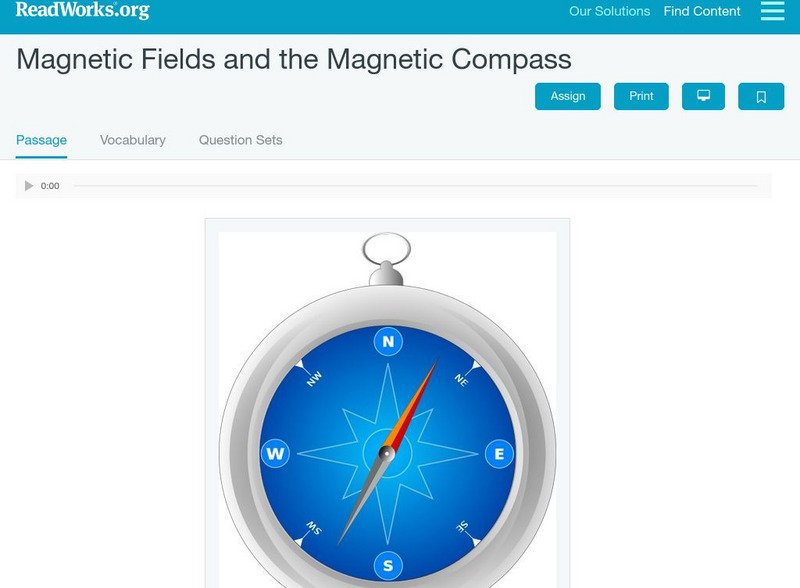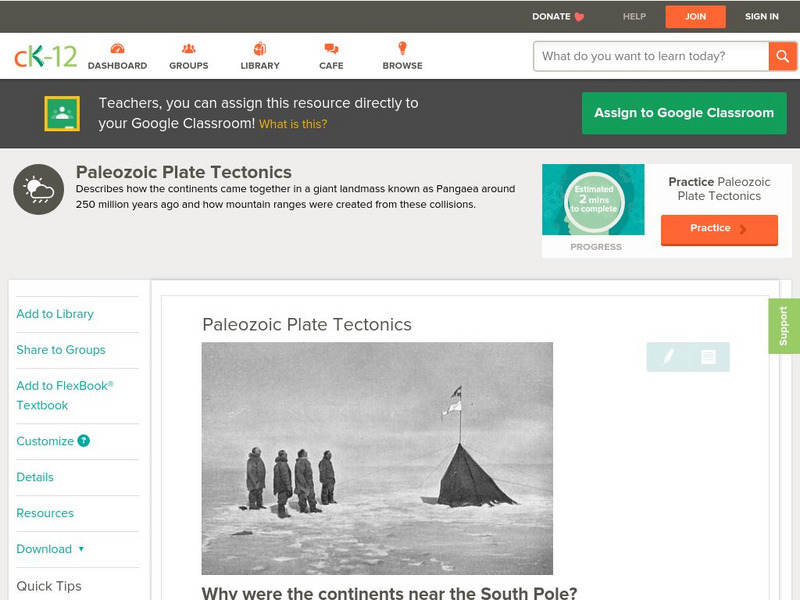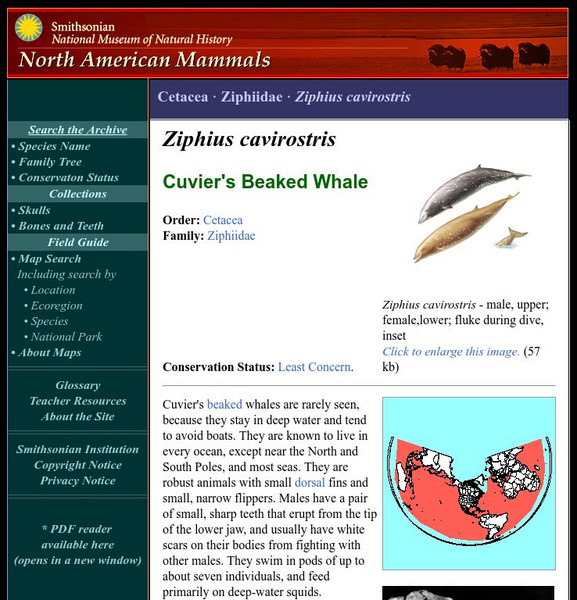Georgia Department of Education
Ga Virtual Learning: Forces on Moving Charges in Magnetic Fields
In this interactive tutorial students will explore magnetic force. Students will observe interactions of magnets and study magnetic fields. The source of magnetic properties is believed to be moving charge. Since moving charge produces...
Science Buddies
Science Buddies: The Strength of an Electromagnet
Has anyone ever told you that you have a magnetic personality? Have you ever heard that opposites attract? These common phrases are both based on the properties of magnets and magnetic electricity. In this science fair project, learn how...
Science Buddies
Science Buddies: Levitating Magnets: Floating Isn't Just for Magicians
If you ever seen a magician float an object in the air, you might think that levitation is just a magic trick, but the truth is you can use an invisible physical force to levitate a magnet. Try this simple, week-long science project to...
Other
Usps: Polar Lights
You and your students are going on an expedition to learn about the polar regions. Explore the glaciers, subglacial rivers, and volcanoes. Get up close and personal with furry, flippered, and feathered friends. Learn how other people...
Other
The Antarctic Sun: News About Antarctica
Latest headline scientific news of theworkbeing done in the Antarctic, and stories of the peopleliving there.
Other
Salariya: You Wouldn't Want to Be a Polar Explorer!
This site talks about the "Expedition you'd rather not go on." Click through this great on-line cartoon book to learn about Shackleton's polar expedition.
Other
Mental Floss: 8 Antarctic Traditions
Every spring in the Antarctica, a new group of workers arrives and stays for a few months. To enliven everyone's stay, some traditions have been put in place. These include a race around the South Pole through all the world's time zones,...
University of Chicago
Cara Virtual Tour: Welcome to Antarctica!
The Center for Astrophysical Research in Antarctica takes you on a tour of New Zealand, McMurdo Station, and the Amundsen-Scott South Pole Research Station, all part of a virtual tour of Antarctica. Lots of pictures and a relaxed style...
Exploratorium
Exploratorium: Global Climate Change: Cryosphere
Examine the effects climate has on the snow and ice covered cryosphere and see live data gathered from the North and South Poles.
Treehut
Suzy's World: Magnetism: Why Does a Compass Point North?
This fact sheet from Suzy's World and Suzy Cato explores how magnetism works, including "why a compass points north." Content includes fun facts, an experiment, and the ability to make your own compass.
TED Talks
Ted: Ted Ed: The Arctic vs. the Antarctic
Camille Seaman describes how enterprising people and organisms have found ways to reside around both poles despite the frigid temperatures. [4:24]
Alabama Learning Exchange
Alex: How Do Magnets Work?
During this instructional activity students will examine magnets and determine that they have two poles (north and south). They will observe which poles attract and which poles repel.
Other
Magnet Man: Cool Experiments With Magnets
Here is a lengthy listing of activities and resources pertaining to magnets and magnetism. Experiments which can be performed with many different types of magnets are described; detailed directions and photos are provided.
World Wildlife Fund for Nature
Wwf: Our Earth: Ecoregions: Habitats: Polar Regions
A simple introduction and overview of the polar regions. Includes a link to information about animals that live in a polar habitat.
Read Works
Read Works: Electric and Magnetic Forces and the Modern Day Compass
[Free Registration/Login Required] An informational text about how a compass works using electromagnetic force. A question sheet is available to help students build skills in reading comprehension.
Read Works
Read Works: Ocean Animal Discovery
[Free Registration/Login Required] An informational text about the discovery of ocean animals. A question sheet is available to help students build skills in reading comprehension.
Enchanted Learning
Enchanted Learning: Zoom School: Antarctica
Learn some amazing facts about the coolest place on Earth, Antarctica. Explore a map and geography, science, animals, explorers, jokes, and more. Also contains a quiz to take.
CK-12 Foundation
Ck 12: Earth Science: Paleozoic Plate Tectonics
How plate tectonics formed Pangaea. [Free Registration/Login may be required to access all resource tools.]
Utah Education Network
Uen: Continents: Antarctica
Use these internet sites and complete the activities for each one to learn more about the second smallest and coldest continent.
Curated OER
Route of Cook's Second Voyage, July 13, 1772 July 29, 1775, South Pole
This page, and the one after it, have a collection of the earliest maps of Canada by all the best known explorers.
Ducksters
Ducksters: Explorers for Kids: Roald Amundsen
Kids learn about the biography and life of explorer Roald Amundsen. learn about the journey of the first man to the South Pole.
Smithsonian Institution
National Museum of Natural History: American Mammals: Cuvier's Beaked Whale
Cuvier's beaked whales are rarely seen because they stay in deep water and tend to avoid boats. They are known to live in every ocean, except near the North and South Poles, and most seas. Learn more about the Ziphius cavirostris, more...
ClassFlow
Class Flow: Magnets
[Free Registration/Login Required] This flipchart helps students differentiate between and identify objects that are attracted by a magnet and those that are not attracted by a magnet.
Other
Boat Safe Kids: Longitude and Latitude
This website starts at the very beginning and explains how round globes are transferred to flat maps. Then they explain the use of longitude and latitude.
Other popular searches
- North Pole South Pole
- Penguins South Pole
- Emperor Penguins South Pole
- North and South Poles
- 90 South Pole
- South Pole Place Near
- Santa in South Pole
- North Pole, South Pole
- The South Pole
- Emperor Penginns South Pole
- North Ans South Poles
- North South Poles

















